
Aerobatics is the practice of flying maneuvers involving aircraft attitudes that are not used in conventional passenger-carrying flights. The term is a portmanteau of "aeroplane" and "acrobatics". Aerobatics are performed in aeroplanes and gliders for training, recreation, entertainment, and sport. Additionally, some helicopters, such as the MBB Bo 105, are capable of limited aerobatic manoeuvres. An example of a fully aerobatic helicopter, capable of performing loops and rolls, is the Westland Lynx.
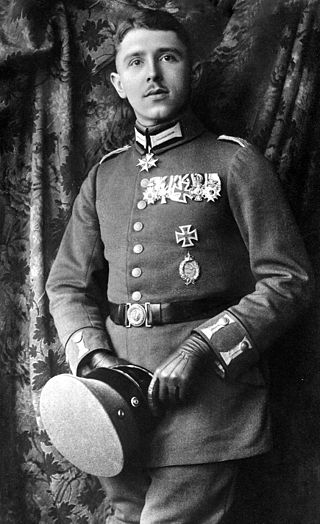
Max ImmelmannPLM was the first German World War I flying ace. He was a pioneer in fighter aviation and is often mistakenly credited with the first aerial victory using a synchronized gun, which was in fact achieved on 1 July 1915 by the German ace Kurt Wintgens. He was the first aviator to receive the Pour le Mérite, colloquially known as the "Blue Max" in his honour, being awarded it at the same time as Oswald Boelcke. His name has become attached to a common flying tactic, the Immelmann turn, and remains a byword in aviation. He is credited with 15 aerial victories.
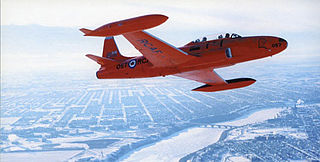
The Red Knight was a Canadian air force aerobatic display aircraft that operated from 1958 to 1969. The red-painted Silver Star performed loops, rolls, Cuban 8s, horizontal 360s, inverted flight, and high speed passes at airshows around North America, often appearing as an opening act for or in conjunction with the Golden Hawks display team and later the Golden Centennaires, Canada's contemporary aerobatic teams. The Silver Star was replaced by the Tutor in July 1968.

Aerobatic maneuvers are flight paths putting aircraft in unusual attitudes, in air shows, dogfights or competition aerobatics. Aerobatics can be performed by a single aircraft or in formation with several others. Nearly all aircraft are capable of performing aerobatics maneuvers of some kind, although it may not be legal or safe to do so in certain aircraft.
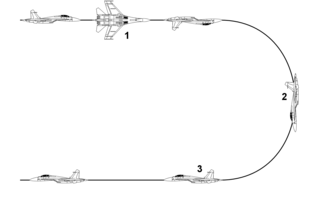
The split S is an Aerobatic maneuver and an air combat maneuver mostly used to disengage from combat. To execute a split S, the pilot half-rolls their aircraft inverted and executes a descending half-loop, resulting in level flight in the opposite direction at a lower altitude.

Basic fighter maneuvers (BFM) are tactical movements performed by fighter aircraft during air combat maneuvering, to gain a positional advantage over the opponent. BFM combines the fundamentals of aerodynamic flight and the geometry of pursuit, with the physics of managing the aircraft's energy-to-mass ratio, called its specific energy.
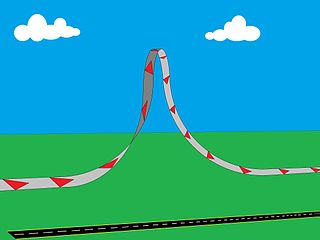
A barrel roll is an aerial maneuver in which an airplane makes a complete rotation on both its longitudinal and lateral axes, causing it to follow a helical path, approximately maintaining its original direction. It is sometimes described as a "combination of a loop and a roll". The g-force is kept positive on the object throughout the maneuver, commonly between 2 and 3g, and no less than 0.5g. The barrel roll is commonly confused with an aileron roll.
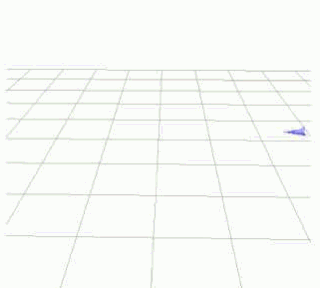
The term Immelmann turn, named after German World War I Eindecker fighter ace Leutnant Max Immelmann, refers to two different aircraft maneuvers. In World War I aerial combat, an Immelmann turn was a maneuver used after an attack on another aircraft to reposition the attacking aircraft for another attack. In modern aerobatics, an Immelmann turn is an aerobatic maneuver that results in level flight in the opposite direction at a higher altitude.

International Miniature Aerobatic Club (IMAC) is a non-profit organization devoted to flying scale aerobatic model aircraft. IMAC is the main governing body responsible for hosting precision aerobatic contests with hundreds of pilots across the United States and Eastern Canada. The organization was founded in 1974 with 97 chartered members.
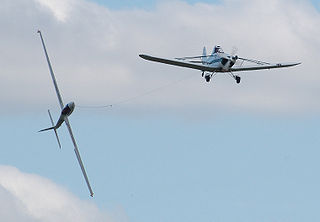
The aileron roll is an aerobatic maneuver in which an aircraft does a full 360° revolution about its longitudinal axis. When executed properly, there is no appreciable change in altitude and the aircraft exits the maneuver on the same heading as it entered. This is commonly one of the first maneuvers taught in basic aerobatics courses. The aileron roll is commonly confused with a barrel roll.
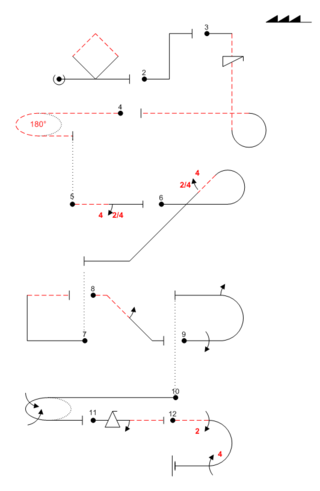
Radio-controlled aerobatics is the practice of flying radio-controlled aircraft in maneuvers involving aircraft attitudes that are not used in normal flight.

The 53rd Air Demonstration Group, nicknamed the Black Eagles, is the flight display team of the Republic of Korea Air Force (ROKAF) based at Wonju, Gangwon Province.

The PAF Blue Diamonds is the national aerobatic team of the Philippine Air Force (PAF). Assigned to the 5th Fighter Wing, the unit is based at Basa Air Base in Floridablanca, Pampanga. Founded in 1952, the Blue Diamonds is one of oldest formal flying aerobatic teams in the world, along with United States Air Force Thunderbirds founded in 1953, the United States Navy Blue Angels formed in 1946, and the Patrouille de France of the French Air Force formed in 1931. The Blue Diamonds has been inactive since 2005.

The tailslide is an aerobatic maneuver that starts from level flight with a 1/4 loop up into a straight vertical climb until the aircraft loses momentum. When the aircraft's speed reaches zero and it stops climbing, the pilot maintains the aircraft in a stand-still position as long as possible, and as it starts to fall to the ground backward, tail first, the nose drops through the horizon to a vertical down position and the aircraft enters a dive. A 1/4 loop recovers to level flight.
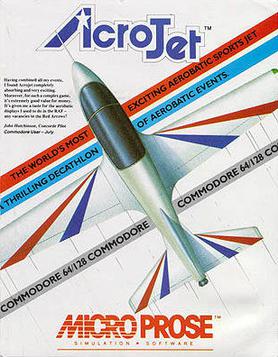
Acrojet is a flight simulator video game developed by MicroProse for the Commodore 64 and published in 1985. It was ported to Amstrad CPC, MSX, ZX Spectrum, NEC PC-8801, and NEC PC-9801. It emphasizes aerial acrobatic flying and maneuverability.
3D Aerobatics or 3D flying is a form of flying using flying aircraft to perform specific aerial maneuvers. They are usually performed when the aircraft had been intentionally placed in a stalled position.
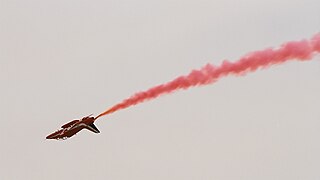
A slow roll is a roll made by an airplane, in which the plane makes a complete rotation around its roll axis while keeping the aircraft flying a straight and level flightpath. A slow roll is performed more slowly than an aileron roll; although it is not necessarily performed very slowly, it is performed slowly enough to allow the pilot to maintain balance, keeping a steady flightpath, pitch angle, and height (altitude) throughout the maneuver. The maneuver is performed by rolling the airplane at a controlled rate with the ailerons, and moving the elevators and rudder in opposition, or "cross-controlling," to keep the plane on a steady, level flightpath.
A wingover is an aerobatic maneuver in which an airplane makes a steep climb, followed by a vertical flat-turn. The maneuver ends with a short dive as the plane gently levels out, flying in the opposite direction from which the maneuver began.
Rob Holland is a highly accomplished aerobatic pilot from the United States. currently residing in Nashua, New Hampshire. Holland is one of the most decorated aerobatic pilots in U.S. history, with an impressive list of accomplishments that includes multiple championship titles and groundbreaking innovations in the field of aerobatics.


















